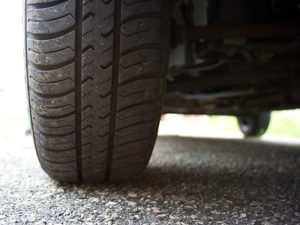 Small pools or leaks under your vehicle may indicate a number of problems, from transmission trouble to power steering system problems. You can perform a simple test for engine leaks on your own, before taking your vehicle in for inspection and diagnosis, so you know what to expect.
Small pools or leaks under your vehicle may indicate a number of problems, from transmission trouble to power steering system problems. You can perform a simple test for engine leaks on your own, before taking your vehicle in for inspection and diagnosis, so you know what to expect.
As long as the area below your engine does not have a protective cover beneath it, there’s a simple process for identifying the location and source of a leak. Park the car over a large, clean sheet of paper or card board and leave it there, ideally overnight. Mark the paper to indicate position of the vehicle. This will help you to identify where the leaks are relative to front, rear, right side, left side. It is extremely important to approach all checks with great caution, and exercise appropriate precautions to avoid injury. If you can’t identify your leak and it persists make a service appointment as soon as possible.
Here are common leak spots descriptions and what they may mean:
Clear, watery leaks located near the air conditioner are likely to be normal condensation from running the system.
Blackish, greasy leaks under the engine area are typically oil. Depending on where you see the stain, look under the hood for leaks around the oil filter and the engine. The leak might also be around the oil drain plug or crankcase and oil pan.
Thick, dark, oily leaks may mean a gear oil leak from a manual transmission, differential, an axle, or the steering gears. These leaks should be checked right away.
Slippery, watery leaks that are green, red, blue, or yellow and coming from under the engine or radiator are likely to be coolant. Check the radiator, pressure cap, engine, and hoses for leaks.
Oily leaks that are a reddish color or clear and located toward the front could be power steering fluid.
Light-colored or clear leaks could be brake fluid. Leaky brakes need immediate professional repair.
Battery acid leaks typically have an odor like rotten eggs. Avoid contact with battery acid and have the battery replaced.
Fuel leaks are usually recognizable by the gasoline smell. Look around the fuel pump and the fuel injectors. If the leak seems to be under the center of the vehicle, it could be the fuel lines, or if it is more toward the back, it could be the fluid tank.
